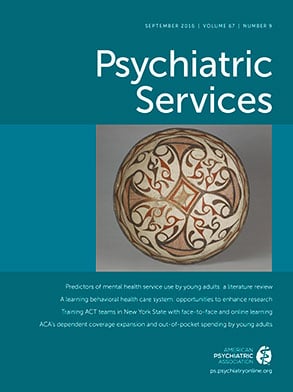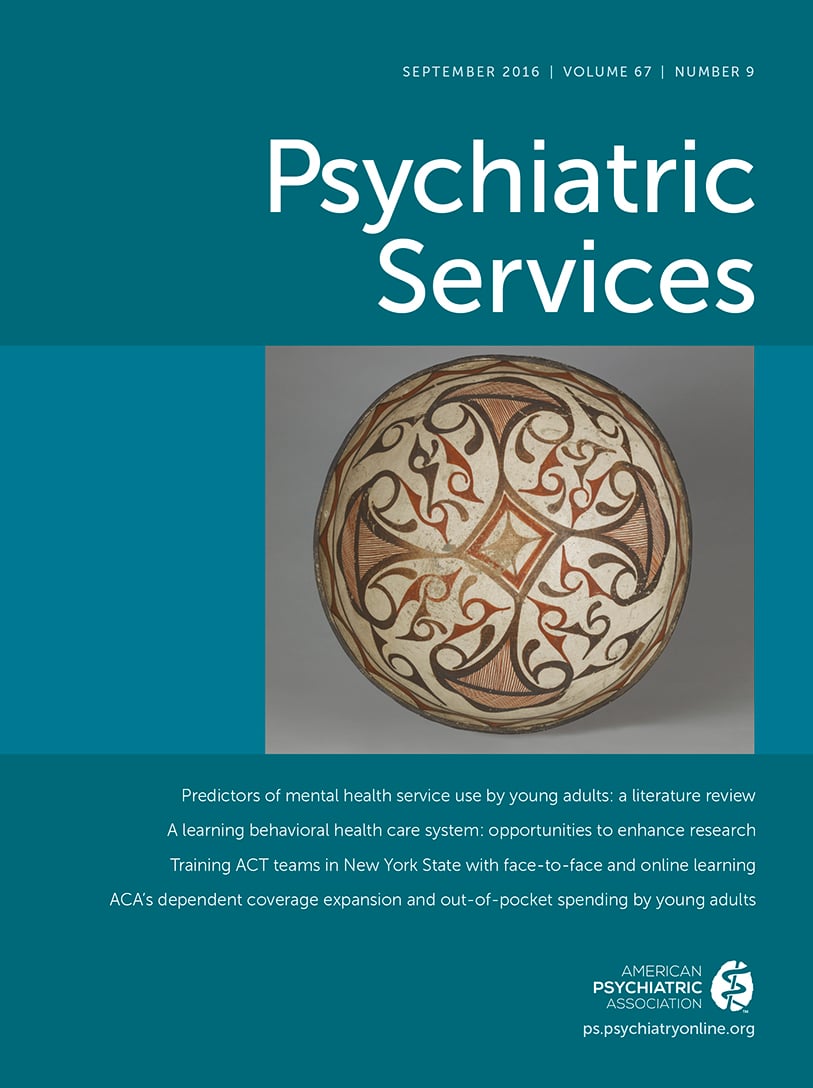Report recommends strategies to reduce stigma: Mental disorders are among the most highly stigmatized health conditions. A new report from the Committee on the Science of Changing Behavioral Health Social Norms of the National Academy of Sciences reviews a broad range of evidence about what works to decrease stigma faced by individuals with mental or substance use disorders and to promote affirming attitudes and beliefs. The strategies reviewed include education, protest and advocacy, programs that facilitate contact between people with and without mental disorders (contact-based programs), contact-based education programs, media campaigns delivered over traditional and newer platforms, and a range of programs involving peers. To reduce stigma associated with behavioral health conditions, the committee concluded that a national, multipronged, coordinated, and sustained effort over two or more decades, led by the U.S. Department of Health and Human Services and supported by multiyear funding, is needed. The report points to the success over the past 25 years of the Ryan White Program, which was initiated by legislation passed in 1990, in reducing stigma associated with HIV/AIDS. The report highlights the importance of communication science for crafting effective messages and selecting appropriate delivery platforms for specific target groups. The committee calls on the Substance Abuse and Mental Health Services Administration to work with federal partners to develop and evaluate effective contact-based programs and peer programs. The 158-page report,
Ending Discrimination Against People With Mental and Substance Use Disorders: The Evidence for Stigma Change, is available on the Web site of the National Academies Press (
http://www.nap.edu/catalog/23442/ending-discrimination-against-people-with-mental-and-substance-use-disorders).
AHRQ summary of evidence on medications for alcohol use disorder: Medications are underused in treating alcohol use disorder. A new two-page handout issued by the Agency for Healthcare Research and Quality (AHRQ) summarizes and rates the strength of evidence from a systematic review of the effectiveness of these medications. Because most studies have evaluated medications in combination with a psychosocial intervention, the potential benefits of using the medications alone are not well established. Acamprosate and oral naltrexone improve alcohol consumption outcomes. Evidence related to injectable naltrexone is limited. Evidence does not support the efficacy of disulfiram, although it may be recommended to individuals who have a goal of abstinence but for whom acamprosate and oral naltrexone are not suitable or to individuals who prefer disulfiram and understand its risks. Evidence is insufficient to determine the effectiveness of these medications in improving health outcomes (for example, mortality, quality of life, and functioning). Epidemiological studies have consistently found that heavy alcohol consumption is related to an increased risk of serious health problems, and findings suggest that improving alcohol consumption outcomes (for example, reducing the number of drinking days) will likely result in improved health outcomes.
Pharmacotherapy for Adults With Alcohol Use Disorder in Outpatient Settings is available on the AHRQ Web site (
https://effectivehealthcare.ahrq.gov/search-for-guides-reviews-and-reports/?pageaction=displayproduct&productID=2273).
Kaiser Foundation determines 50 most costly drugs in Medicaid programs: Costly specialty drugs, such as those used to treat hepatitis C and HIV, are among the most costly medications in state Medicaid programs, chiefly because of their high prices for a course of treatment, according to a Kaiser Family Foundation analysis of Medicaid’s most costly outpatient drugs between January 2014 and June 2015. Two factors account for high cost: the high price of an individual prescription and heavy prescription of a drug. Twenty-two of the 50 most costly drugs are particularly expensive at the prescription level, including the antipsychotic Abilify, the most costly drug before rebates used by Medicaid over this period. Of the 50 most costly drugs, 45 fall into the high-cost category in part or primarily because they are frequently prescribed. Hydrocodone-acetaminophen and Suboxone, both opioids, fall into this category, as do several drugs used to treat attention-deficit hyperactivity disorder. Nearly three quarters of the 50 most costly drugs fall into five drug groups, the most prevalent of which is antivirals, which includes drugs used to treat HIV and hepatitis C. The 23-page report,
Medicaid’s Most Costly Outpatient Drugs, is available on the Kaiser Family Foundation Web site (
http://kff.org/health-costs/issue-brief/medicaids-most-costly-outpatient-drugs).
Commonwealth Fund’s new case study series on care for “high-need, high-cost” patients: The Commonwealth Fund has launched a series of case studies profiling innovative programs designed for patients with the most complex needs—a high-need, high-cost population that accounts for a disproportionate share of U.S. health care spending. The programs, which target such groups as the frail elderly, people with both general medical and behavioral health conditions, and those with physical disabilities, show how new care approaches can improve care and rein in spending. The case studies describe each model’s key features, financing mechanisms, and early impact on patient experiences, health care use, and costs. The series begins with a profile of MedStar Washington Hospital Center’s Medical House Call Program, which is participating in the Centers for Medicare and Medicaid Services’ Independence at Home Demonstration. This promising program relies on geriatricians, nurse practitioners, and social workers to make house calls to frail elders who are unable to visit the doctor’s office. The nine-page case study,
Bringing Primary Care Home: The Medical House Call Program at MedStar Washington Hospital Center, is available on the Web site of the Commonwealth fund (
http://www.commonwealthfund.org/publications/case-studies/2016/jul/medstar-washington-hospital-center?omnicid=EALERT1072851&mid).
SAMHSA guide on ensuring equal coverage for behavioral health conditions: The Substance Abuse and Mental Health Services Administration (SAMHSA) has developed a guide to help states and other stakeholders ensure that health care coverage for behavioral health conditions is comparable to medical and surgical benefits. The 13-page guide,
Approaches in Implementing the Mental Health Parity and Addiction Equity Act: Best Practices From the States, was developed in collaboration with partners across the federal government. SAMHSA consulted insurance commissioners and other officials from seven states with robust parity implementation efforts: California, Connecticut, Maryland, Massachusetts, New York, Oregon, and Rhode Island. The officials were asked to identify parity implementation processes, collaborations with other organizations, and tools used for understanding and monitoring compliance that might be useful for other states. The states identified five primary components that they considered essential for the successful implementation and monitoring of parity: open channels of communication; standardization of materials; creation of templates, workbooks, and other tools; implementation of market conduct exams and network adequacy assessments; and collaboration with multiple state and federal agencies, health insurance carriers, and stakeholder groups. The new guide is available on the SAMHSA Web site (
http://store.samhsa.gov/shin/content//SMA16-4983/SMA16-4983.pdf).
Two SAMHSA reports on care for pregnant women and mothers with opioid use disorder: SAMHSA has released two reports on the best approaches for optimizing outcomes for pregnant and parenting women with an opioid use disorder and their infants. Both reports are aimed at helping these woman gain greater access to effective treatment and other important services. The first,
Advancing the Care of Pregnant and Parenting Women With Opioid Use Disorder and Their Infants: A Foundation for Clinical Guidance (
https://federalregister.gov/a/2016-18324), summarizes the evidence review and rating processes that SAMHSA uses to establish appropriate interventions for this population. The aim is to establish a foundation for developing a clinical guide to enable more health care providers to offer specialized treatment to women with opioid use disorder and their opioid-exposed infants. SAMHSA is seeking public comment on the clinical translation of this report to ensure that it is of maximum utility. In partnership with the Administration on Children, Youth, and Families, SAMHSA has also released
A Collaborative Approach to the Treatment of Pregnant Women With Opioid Use Disorders: Practice and Policy Considerations for Child Welfare and Collaborating Service Providers (
https://ncsacw.samhsa.gov/resources/opioid-use-disorders-and-medication-assisted-treatment/default.aspx). This report is a guide to promoting collaborative efforts among agencies and providers serving pregnant and postpartum women with opioid dependence and their infants. It presents a coordinated, multisystemic approach grounded in early identification and intervention to assist child welfare, medical, substance use disorder treatment, and other systems in developing approaches for supporting families.
ICRC brief on alternatives to inpatient psychiatric services: The Integrated Care Resource Center (ICRC) has released a brief describing enhanced residential crisis stabilization units (enhanced CSUs) for Medicare-Medicaid enrollees. The new care setting was created by Commonwealth Care Alliance (CCA), a not-for-profit health plan participating in Massachusetts’ One Care demonstration under the Medicare-Medicaid Financial Alignment Initiative. When the demonstration began serving enrollees in 2013, CCA noted their unexpectedly high use of emergency department and inpatient psychiatric facilities. The two enhanced CSUs—The Carney and Marie’s Place—provide short-term residential care for patients in psychiatric crisis who could be appropriately served in a community-based setting and connect these patients to ongoing community-based care. The Carney is a 12-bed unit in a wing of a community hospital, and Marie’s Place is a 14-bed freestanding building in a residential neighborhood in Brighton. Massachusetts’ One Care demonstration is unique among the states in that it includes only individuals under age 65 at enrollment, who are more likely than older enrollees to have long-term behavioral health conditions such as anxiety disorders, bipolar disorder, depression, or schizophrenia and other psychotic disorders. The average stay is ten days (compared with 13 days for inpatient psychiatric care), with an average cost per day of $680 (compared with $1,100). Preliminary data suggest that the enhanced CSUs may have contributed to decreased inpatient stays, emergency department admissions, and per-member per-month costs. Other states developing integrated care delivery approaches for the under-65 Medicare-Medicaid population can draw upon CCA’s experience to anticipate challenges and inform their integrated strategies. The 12-page brief,
Alternatives to Inpatient Psychiatric Services for Medicare-Medicaid Enrollees: A Case Study of Commonwealth Care Alliance, is available on the ICRC site (
www.integratedcareresourcecenter.com/PDFs/ICRC_CCA_Case_Study%20(002).pdf).
NIC white paper on veterans treatment courts: The National Institute of Corrections (NIC) has prepared a report on promising practices in diversionary courts for veterans, which are modeled on mental health and drug courts. The first example of what came to be considered a veterans treatment court was started in 2004 in Anchorage, Alaska. But the court that provided inspiration for widespread dissemination was started in January 2008 in Buffalo. The white paper is based on interviews with key stakeholders in jurisdictions where veterans treatment courts have been operating successfully. Key components of the courts are outlined, and considerations for jurisdictions aiming to start a court are listed. The proponents and practitioners describe how these courts are “the right thing to do” for combat veterans who commit certain crimes that are associated with the legacy of their wartime experiences. The 79-page white paper,
Veterans Treatment Courts: A Second Chance for Vets Who Have Lost Their Way, is available on the NIC Web site (
http://nicic.gov/library/030018).

